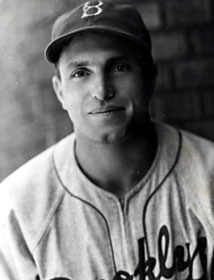The 1932 National League winner was the Chicago Cubs. They weren’t the “loveable losers” of later times. As recently as 1929 they’d been in the World Series. Their manager at that point was the current Yankees manager Joe McCarthy.
The Cubs began the season with Rogers Hornsby as manager. By Series time he was gone. Frankly, he’d hadn’t done much as manager and bluntly no one liked him (well, I suppose Mrs. Hornsby did). So out he went and in came “Jolly Cholly” Charlie Grimm, the first baseman. He was able to get more out of the team and led them to the Series. In most hitting categories, the Cubs were middle of the National League. They were fourth in runs, triples, walks, batting average, slugging, and total bases; fifth in hits, homers, stolen bases; and third in doubles. Their three top home run hitters combined for one more home run than Lou Gehrig hit. The staff was much better. They led the NL in ERA, hits, and runs allowed; were second in strikeouts; and fifth in walks.
The staff consisted of five pitchers who started 15 or more games. The ace was Lon Warneke who went 22-6 with a 2.37 ERA (160 ERA+), a 1.123 WHIP, and a team leading 6.9 WAR. Pat Malone and Guy Bush had ERA’s in the low to mid-threes, had WHIP numbers that were good and put up 2.7 WAR (Bush) and 2.5 (Malone). At 38, Hall of Fame hurler Burleigh Grimes was still good enough to start 18 games. His ERA was over four, his WHIP was 1.585, and he had a -0.9 WAR. The fifth starter was Charlie Root. He ha 15 wins, a 3.58 ERA, a 1,230 WHIP, and 1.8 WAR. He would also throw the most famous pitch of the Series.
Their primary receiver was Hall of Fame catcher Gabby Hartnett. He was 31, hit .271, was second on the team with 12 home runs, had a 111 OPS+ and 2,5 WAR. As his backup, Rollie Hemsley hit .238 and had four home runs, the most of any bench player.
Riggs Stephenson, Hall of Famer Kiki Cuyler, and Johnny Moore were the primary Chicago outfield. Stephenson, who ended his career with a huge batting average, but few at bats, hit .324 with a team leading 121 OPS+. He led the team with 49 doubles and 189 hits, and had 3.3 WAR. Cuyler, who’d been known for his speed, hit 291 with nine steals, 10 homers (good for third on the team), and managed all of 1.6 WAR. Moore led the team in home runs with 13 and hit .305, while producing 2.3 WAR. Backups included Marv Gudat, who played first and actually pitched an inning, Lance Richbourg, and Vince Barton. Barton had the most home runs and Gudat’s 0.0 WAR led the crew.
The Cubs infield saw six men do most of the work. Manager Grimm was at first. He hit .307 with seven home runs, good for fourth on the team. His 80 RBIs were second and he pulled 107 OPS+. All that produced 2.5 WAR. Hall of Fame second sacker Billy Herman hit .314 with a team leading 14 stolen bases. His 3.5 WAR led all position players. Woody English and Billy Jurges were the normal left side of the infield. English hit .272 with 1.8 WAR while shortstop Jurges hit .253, lowest among the starters, and had 2.4 WAR. Both men were spelled by players that would have a profound impact on the team. Stan Hack was still 22 and beginning a long run as the Cubs third baseman. He hit .236 and had 0.2 WAR. If Hack had the longer term impact on Chicago, Mark Koenig had the more important short-term value. He’d come over in mid-season and sparked the team. He hit .353 with three home runs, had 11 RBIs in 33 games, put up an OPS+ of 136 with 1.4 WAR. He was generally credited with being the cog that put the Cubs over the top. But because he’d come over at mid-season, the team didn’t vote him a full share of the World Series purse. As a former teammate of the Yankees (he was the Murderer’s Row shortstop in the late 1920s) this action hacked off a lot of the New Yorkers, especially Babe Ruth. It would cause more bad blood between the teams than did a normal World Series campaign.
If you look at the team numbers closely, you can see why New York was favored. Chicago was, despite the number differential, still a good team and there were hopes it could compete evenly with the Yankees.




